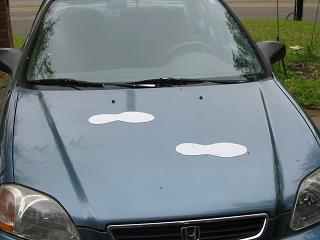
The roma tomatoes were piling up. I borrowed a pressure canner, picked some basil and got to work. I started with probably 6 quarts of whole roma tomatoes from the garden and 3 or 4 cups of freshly cut whole sweet basil leaves. I blanched the tomatoes, peeled them and diced them. I chopped the basil leaves somewhat coarsely. They filled 9 half-pint jars. I put them in the canner for 20 minutes at 15 pounds. No magic to those numbers. I just made it up. I read a few web sites with various different times and pressures and decided 15 pounds for 20 minutes was good.
Here is what I learned about pressure canners in the last couple of days. The pressure allows you to boil water at temperatures higher than 100 degrees Celsius. Normally if you boil anything, the temperature of your food can't get above 100 because the water can't get above 100. If it does, it boils off as steam. Wikipedia gives the details, but the advantages to food preservation are twofold:
- The temperature of the food is raised above 100 degrees Celsius for an extended period of time, thus killing off bacteria that might otherwise grow inside the jar and spoil the food.
- The heating and subsequent cooling of the jars in this environment creates a vacuum seal for the jar that means bacteria outside can't get in.
I also learned that pressure cookers can cook food much faster than open pots and can use up to 70% less energy to do so. That alone has me wanting to get a small pressure cooker for everyday vegetable cooking. Nevermind that it can also be used to sterilize items like baby bottles and breast pump parts. Add to that the ability to can foods and the pressure cooker is looking like a handy gadget to have in the kitchen.
Out in the garden, we got three inches of rain in the last two days. The lettuce is bolting. The tomatoes are petering out. The beans are drying up. Summer harvest is nearly over. I need to begin planning out my square foot garden and start my graduated planting crops, like carrots and onions.


